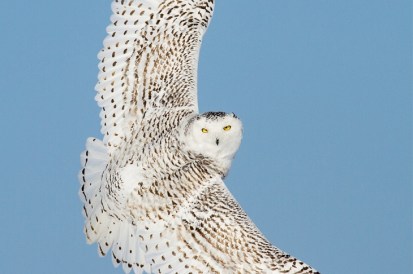Sir John Lister-Kaye has adopted a very familiar format in his new book of wildlife encounters. Essentially he charts a single 12-month cycle in the life of the Scottish Highlands near his home at the Aigas Field Centre, just to the west of Inverness. The author has lived in the region since the 1960s, when he was lured north out of a business career to take up work with the famous naturalist Gavin Maxwell.
In the intervening half-century he has acquired a deep knowledge of wildlife, and many of his observations are skilfully woven into the fabric of his 12-month narrative, so that we end up with a lifetime’s rich experience for the price of one year’s diary. For all his ability to capture the specialities of the region — the pine martens raiding his hen house or acquiring essential vitamins through their curious treetop harvest of rowan berries, or ravens nesting in Arctic blizzards, or the whooper swans and the wild winter geese migrating south from Iceland — it is his intimacy with what might be called his more mundane neighbours that I found most compelling.
A tour de force of forensic observation and imaginative reconstruction is a passage in which he follows the musky prints left by a hunting fox one snow-covered morning. The maker of those tracks has long gone to earth, but Lister-Kaye, drawing on an entire career of other fox sightings and fox thoughts, re-imagines the living creature, its movements, its pauses and its hunting strategies, from the marks left behind. By the end he makes the reader feel as if they witnessed the whole moonlit drama themselves.
Another ploy of the author is to start with some casual observation and use it as an unlikely scaffold on which to build a political or philosophical essay. The most striking is his withering attack upon the depredations inflicted on Highland predators — the eagles, peregrines, harriers and wild cats — by gamekeepers and their employers. Lister-Kaye reminds us that as recently as 2004 people have been convicted of killing short-eared owls near his home. Even today there is a strong lobby for permission to resume the slaughter of buzzards because they conflict with pheasant-rearing operations. Given that Lister-Kaye is himself landed, titled and with a hunting-and-shooting background, his views on these matters seem all the more important and convincing.
It is surely more than coincidence that the two authors who were most closely involved in the career of Gavin Maxwell both developed literary styles that seem to owe something to the man who wrote A Ring of Bright Water. Richard Frere, who was his business manager at the end of his life, deployed it to immense effect in a semi-autobiographical work called Maxwell’s Ghost. And even today Lister-Kaye’s writing bears similar traces of his old friend. In Gods of the Morning the prose carries a deep, rich polish, yet is also sieved rigorously for emotional excess.
It is further characterised by a lifetime of relentless looking — who else keeps binoculars by the bath, so he can watch rooks as he soaks? The poetry in many of his descriptions arises from sheer precision rather than any worked-up literariness. The plumage of a raven, for instance, is as ‘glossy as a midnight puddle’; the extraordinary crocus yellow on the bill of a male blackbird ‘like a struck match’. Looking down into the impressed footprints left by one of his favourite mammals, Lister-Kaye detects the ‘rosebud curve of the centre pad on a pine marten’ and ‘claws like punctuation marks dotting each toe’. The overall impact of these elements is a rhythmically balanced, finely controlled lyricism.
The one trope from an older kind of nature writing that gave me pause for thought is Lister-Kaye’s love of anthropomorphising. It is part of the DNA of this book. Wind, rain, darkness, the seasons, the months and many of the animals and plants he knows and loves are shaded in human qualities. At times I got a bit impatient with ‘Mr Fox’ and ‘the lie-abed sun’, but gradually I came to view it as a measure of the man.
Lister-Kaye is a modern-day animist, so intimately attuned to the nuances of Highland life that he accepts no clear boundaries between its multitudinous inhabitants. They are all active agents in the life of a single community. It is this wholeness of vision, and his insistence upon the natural world as an integral, necessary part of human experience, that make this excellent book a very contemporary work.






Comments